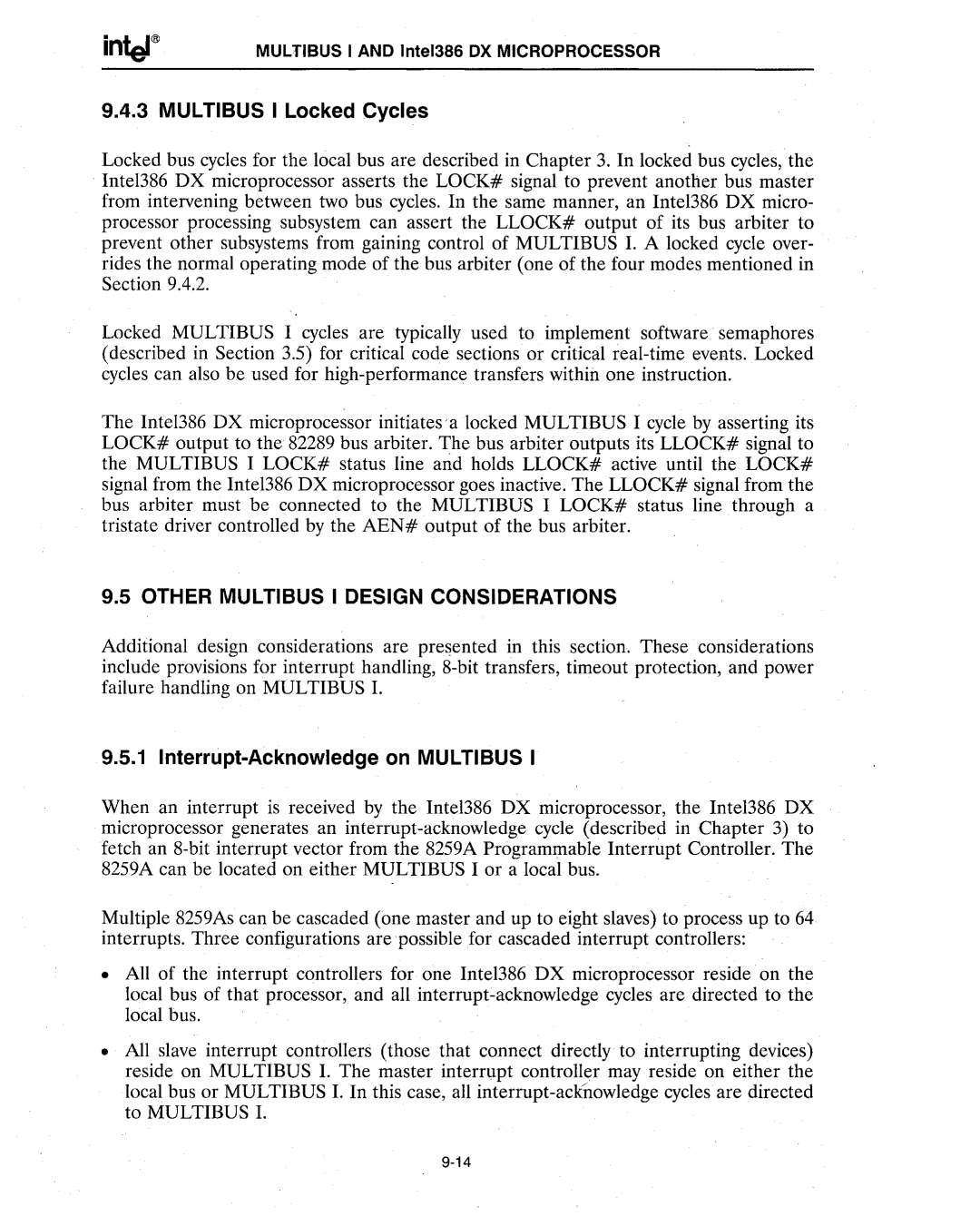
MULTIBUS I AND Intel386 DX MICROPROCESSOR
9.4.3 MULTIBUS I Locked Cycles
Locked bus cycles for the local bus are described in Chapter 3. In locked bus cycles, the Intel386 OX microprocessor asserts the LOCK# signal to prevent another bus master from intervening between two bus cycles. In the same manner, an Intel386 OX micro- processor processing subsystem can assert the LLOCK# output of its bus arbiter to prevent other subsystems from gaining control of MULTIBUS 1. A locked cycle over- rides the normal operating mode of the bus arbiter (one of the four modes mentioned in Section 9.4.2.
Locked MULTIBUS I cycles are typically used to implement software semaphores (described in Section 3.5) for critical code sections or critical
The Intel386 OX microprocessor initiatesalocked MULTIBUS I cycle by asserting its LOCK# output to the 82289 bus arbiter. The bus arbiter outputs its LLOCK# signal to the MULTIBUS I LOCK# status line and holds LLOCK# active until the LOCK# signal from the Intel386 OX microprocessor goes inactive. The LLOCK# signal from the bus arbiter must be connected to the MULTIBUS I LOCK# status line through a tristate driver controlled by the AEN# output of the bus arbiter.
9.5 OTHER MULTIBUS I DESIGN CONSIDERATIONS
Additional design considerations are presented in this section. These considerations include provisions for interrupt handling,
9.5.1 Interrupt-Acknowledge on MULTIBUS I
When an interrupt is received by the Intel386 OX microprocessor, the Intel386 OX microprocessor generates an
Multiple 8259As can be cascaded (one master and up to eight slaves) to process up to 64 interrupts. Three configurations are possible for cascaded interrupt controllers:
•All of the interrupt controllers for one Intel386OX microprocessor reside on the local bus of that processor, and all
•All slave interrupt controllers (those that connect directly to interrupting devices) reside on MULTIBUS 1. The master interrupt controller may reside on either the local bus or MULTIBUS 1. In this case, all
